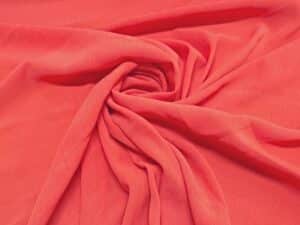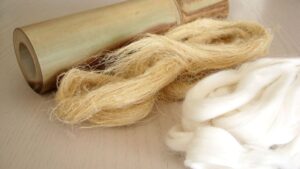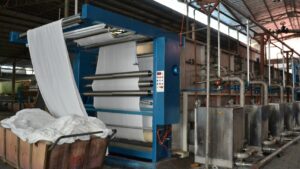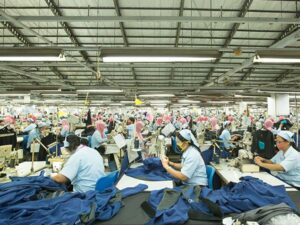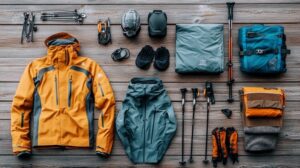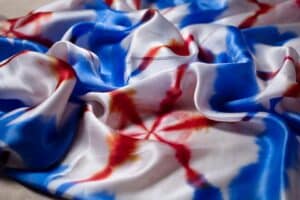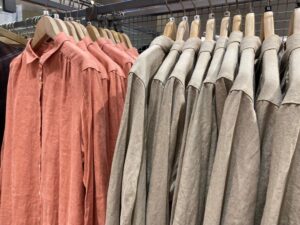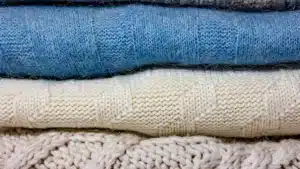When picking outdoor clothes, you may choose fleece or wool. Both materials have special benefits for different situations. Fleece is light, keeps you warm, and dries fast. This makes it great for wet weather. Wool is better at keeping heat and handling moisture. It works well in cold places. Your decision depends on the weather, your activity, and your budget. Knowing these differences helps you choose the best one for your trips.
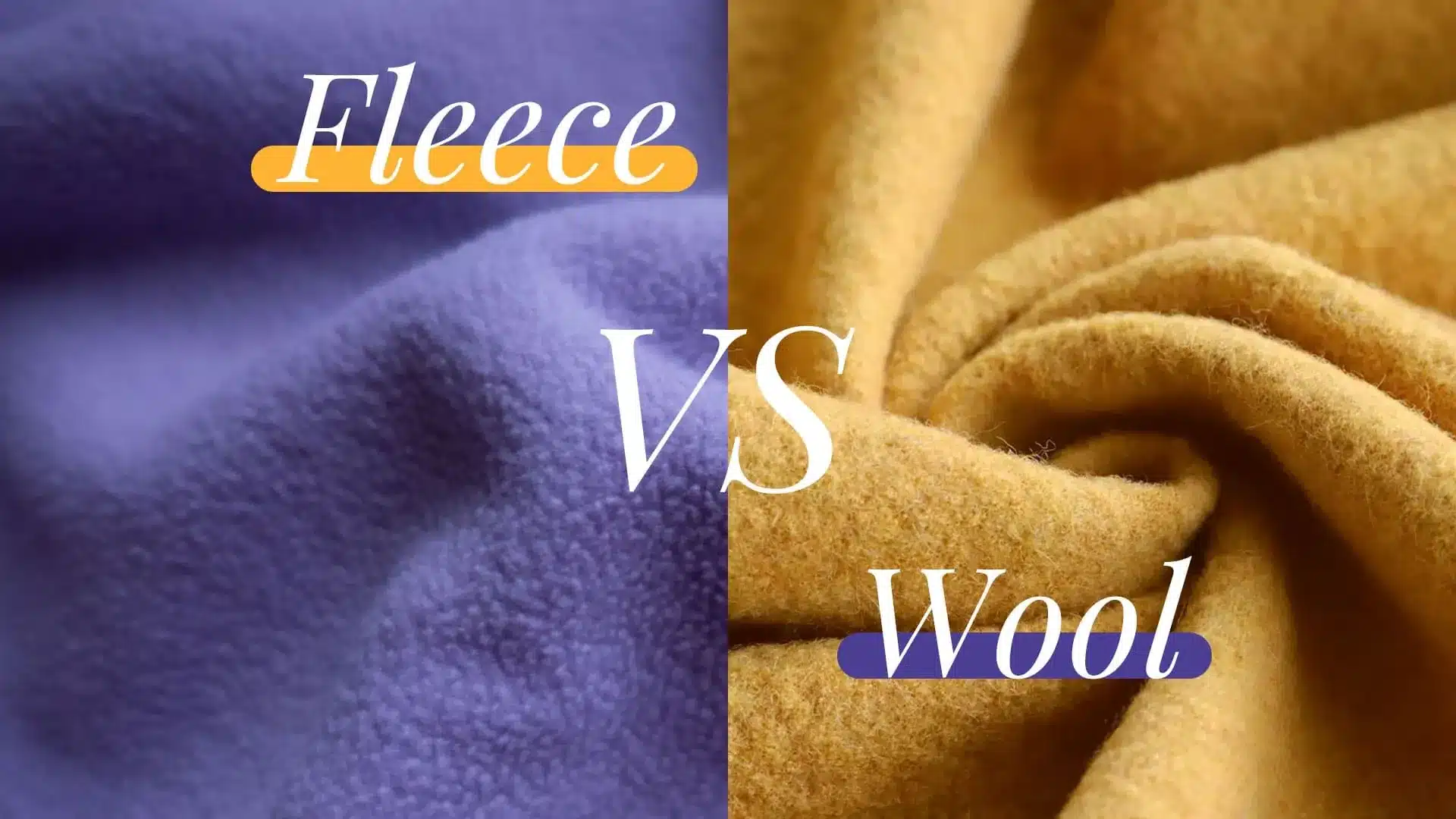
Comparing Fleece and Wool for Outdoor Use
Explore the differences between fleece and wool for outdoor clothing.
| Features | Fleece | Wool |
|---|---|---|
| Warmth | Lightweight, traps air for warmth. | Excellent insulation, retains heat even when wet. |
| Breathability | Highly breathable, making it great for high-intensity activities. | Naturally breathable and regulates temperature effectively. |
| Moisture Management | Dries quickly, resists water. | Absorbs moisture, keeps skin dry. |
| Comfort | Soft and non-itchy. | Can be itchy, but Merino is softer. |
| Weight | Very lightweight. | Heavier than fleece. |
| Durability | Easy care, can pill. | Strong, requires careful washing. |
| Odor Resistance | Can retain odors. | Naturally resists odors. |
| Cost | More affordable option. | Higher cost, but durable. |
| Environmental Impact | Made from synthetic fibers. | Natural, renewable, biodegradable. |
Key Takeaways
-
Fleece is light, dries fast, and great for cool or wet weather. It works well as a middle layer for outdoor fun.
-
Wool keeps you warmer and handles moisture better. It’s best for cold and wet weather. It stays warm even when wet.
-
For active sports, fleece is better because it dries quickly. Wool is best for long, cold trips.
-
Fleece costs less and is easy to clean. Wool lasts longer and works well in tough weather.
-
Wool is better for the planet than fleece. It’s natural, renewable, and breaks down easily, helping the environment.
Warmth and Insulation
Fleece for Warmth
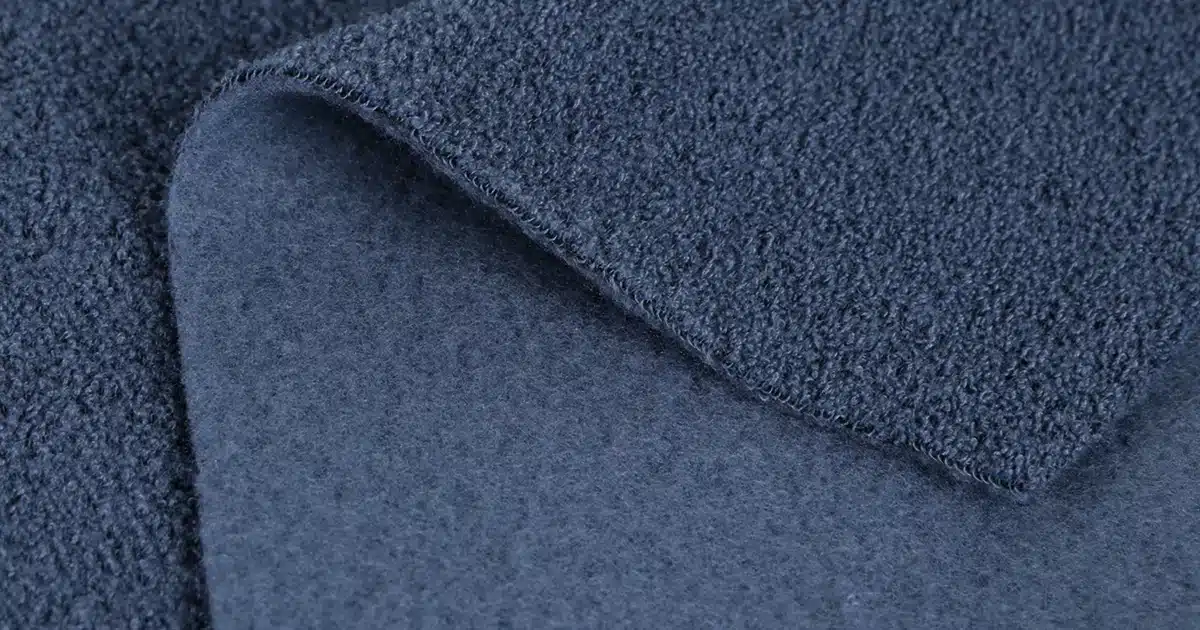
Fleece keeps you warm by holding air in its fibers. This creates a layer that traps heat. It is light and lets air flow, making it great for outdoor fun. Fleece works best as a middle layer in dry weather. It dries quickly, so you stay warm even if it gets a little wet.
Tip: Fleece dries quicker than wool, so it's good for damp, not soaked, conditions.
| Feature | Benefit |
|---|---|
| Insulation | Holds air to keep you warm |
| Quick-drying | Helps you stay dry in wet weather |
| Breathability | Lets air flow during activities |
Fleece is a good pick for cool to mildly cold weather. But it doesn’t block wind as well as wool does.
Wool for Warmth
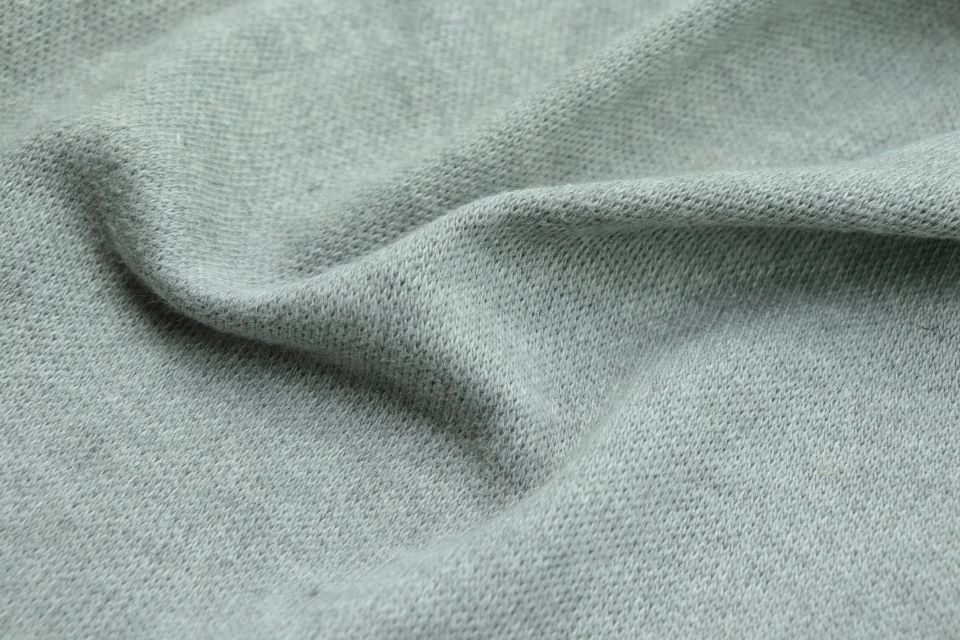
Wool is great for staying warm in cold, wet weather. Its natural fibers trap air, creating tiny pockets that hold heat. Wool keeps you warm even in freezing temperatures. It also absorbs and releases moisture, so you don’t feel sweaty during activities.
Merino wool is special because it’s light but very warm. Its wavy fibers add warmth while still letting air flow. Wool clothes, like base layers, are perfect for layering in cold weather.
Wool stays warm even when wet, making it great for tough outdoor conditions.
Is Fleece Warmer Than Wool?
When comparing fleece and wool for warmth, the answer depends on the context. Fleece, typically made from polyester, offers excellent insulation by trapping air in its fluffy fibers, making it a lightweight and cozy option for outdoor clothing - often warmer per gram than traditional wool.
However, wool, especially high-quality varieties like merino, excels in retaining heat even when wet, thanks to its natural crimped structure, which creates insulating air pockets.
In dry, cold conditions, fleece might feel warmer initially due to its thickness and wind resistance, but wool’s ability to regulate temperature and wick moisture often makes it a superior choice for prolonged exposure or variable weather.
If you’re going somewhere freezing or wet, pick wool. For moderate cold or dry weather, fleece is a lighter, breathable choice.
Moisture Management
Fleece and Moisture Control
Fleece helps you stay dry during outdoor fun. It’s made from synthetic fibers, like polyester, that resist water and dry fast. This makes fleece great for light rain or damp weather. Some fleece types, like French Terry, have loops to let sweat escape. Grid fleece has a special pattern that improves airflow and dries sweat faster. These features make fleece perfect for active sports where staying dry matters.
Tip: Polyester fleece dries quicker than wool, so it’s great for wet places.
| Feature | What It Does |
|---|---|
| Airflow | Lets air move, keeping you cool. |
| Sweat-Wicking | Pulls sweat off your skin. |
| Quick Drying | Absorbs little water and dries super fast. |
Wool and Moisture Absorption
Wool soaks up water but still keeps you warm. Its natural fibers hold water without feeling wet. Wool can absorb up to one-third of its weight in water. This makes it great for base layers close to your skin. Merino wool is special because it handles moisture well and keeps you comfy. Even when wet, wool traps air to keep you warm.
Wool’s moisture control makes it great for cold, wet weather.
-
Wool pulls water into its fibers, keeping your skin dry.
-
It traps air for warmth, even when it’s wet.
-
Lightweight Merino wool is perfect for outdoor activities.
Best for High-Intensity Activities
For intense activities, fleece is better because it dries fast. Polyester fleece, used in sportswear, keeps you dry and comfy. But wool is warmer and breathes better, so it’s good for cold trips. Brands like Patagonia Capilene shows how fleece works well outdoors.
If you need to stay dry during tough activities, pick fleece. For colder, longer trips, wool is warmer and handles moisture better.
Comfort and Weight
Fleece: Light and Soft
Fleece is light and very soft to touch. It’s made from synthetic fibers like polyester, which keep you warm without feeling heavy. This makes fleece great for layering during outdoor fun. If you have sensitive skin, fleece is a good choice because it doesn’t itch like some other materials.
Fleece keeps you warm without making you too hot. It also dries fast, which helps in damp weather. If you want comfort and easy movement, fleece is a smart pick.
| Property | Fleece | Wool |
|---|---|---|
| Weight | Light | Heavier |
| Softness | Very soft | Can feel itchy |
| Drying Speed | Dries fast | Slower |
Tip: Fleece was created to avoid the itchiness of wool, making it great for people with sensitive skin.
Wool: Natural and Useful
Wool is a natural material that works well for outdoor clothes. It keeps you warm even when it’s wet, so it’s great for cold trips. Wool lets sweat escape, keeping you dry and comfy during activities. This is helpful for long trips where staying fresh matters.
Merino wool is softer than regular wool and feels nice on your skin. Unlike traditional wool, it doesn’t itch much. Wool also stops bad smells, so you can wear it longer without washing. Whether hiking, camping, or skiing, wool adjusts to your needs.
| Property | Description |
|---|---|
| Breathability | Lets sweat out, keeping you dry and comfy. |
| Odor resistance | Stops bad smells naturally. |
| Insulation | Keeps you warm without being bulky, great for layering. |
Wool’s natural features make it a great pick for cold-weather adventures.
Best for Long Outdoor Use
For long trips, pick based on the weather. Fleece is light and dries fast, so it’s good for mild weather or active sports. It’s also better for people with sensitive skin. Wool is best for cold, wet places. It stays warm when wet and doesn’t smell bad, making it great for multi-day trips. If you want something durable and natural, wool is the way to go.
Durability and Maintenance
Fleece: Simple to Care For
Fleece is very easy to take care of. Its synthetic fibers, like polyester, don’t shrink or wrinkle. You can wash it in a regular machine without worry. It dries fast, so you can wear it again quickly. This makes fleece great for frequent outdoor use.
Fleece doesn’t stain easily and doesn’t hold bad smells. You can wear it a few times before washing. But fleece can get little fabric balls, called pilling, in areas like elbows. Picking high-quality fleece can help reduce pilling and make it last longer.
Tip: Wash fleece in cold water and skip fabric softeners to keep it in good shape.
Wool: Strong but Needs Care
Wool is tough but needs more careful handling than fleece. Its fibers are stretchy, so it can handle wear and tear well. Wool lasts a long time and resists bad smells, making it great for long trips. It also keeps you warm by trapping air.
Washing wool takes more effort. Hot water or heat can shrink it or change its shape. Hand washing or using a gentle, cold cycle is best. Wool can also get damaged by sunlight or moths, so store it properly.
-
Key Features of Wool Durability:
-
Stretchy fibers handle wear and tear well.
-
Natural warmth from trapped air.
-
Stops bad smells with antimicrobial properties.
-
Note: Keep wool in a cool, dry place to protect it from moths and sunlight.
Best for Tough Conditions
Both fleece and wool work well in tough outdoor settings. Fleece is light, dries fast, and resists stains, so it’s good for wet or muddy places. Wool is warmer and resists odors, making it better for cold or long trips.
| Feature | Wool | Fleece |
|---|---|---|
| Strength | Stretchy fibers, handles wear well. | Less strong, wears out faster. |
| Moisture control | Absorbs water but keeps skin dry. | Dries fast but can feel damp. |
| Warmth | Traps air to stay warm in cold. | Less warm, feels colder when wet. |
| Odor resistance | Stops bad smells naturally. | Can hold onto odors. |
For tough conditions, pick fleece for wet, active trips. Choose wool for warmth and odor control on longer adventures.
Cost and Affordability
Fleece: Affordable Option
Fleece is a cheaper choice for outdoor clothes. It’s made from synthetic materials like polyester, which are easy to produce. This lowers the cost, making fleece a good pick for shoppers on a budget. Whether it’s a fleece jacket or blanket, it usually costs less than wool.
-
Fleece costs less than wool.
-
Synthetic fibers make fleece cheaper to produce.
-
Affordable options make fleece popular for many people.
| Material | Price Range |
|---|---|
| Fleece | Lower cost |
| Wool (Merino) | Higher cost |
If you want warmth without spending too much, fleece is great. It’s affordable but still works well, making it perfect for casual outdoor use.
Wool: Worth the Price
Wool, especially Merino wool, is more expensive but worth it. Its natural fibers give excellent warmth, handle moisture well, and last long. These features, along with being eco-friendly, explain its higher price. Many people like wool for its quality and sustainability.
Wool is seen as a high-end material because of its performance. New technology has made wool useful for both everyday wear and outdoor gear. While it costs more, its durability and benefits make it a smart buy.
Best Choice for Your Needs
Your choice depends on what matters most to you. Fleece is a great value if you’re on a budget. It’s warm, dries fast, and is easy to care for at a low price. Wool, however, is better for extreme weather. It lasts longer and performs better, making it worth the extra money.
For lightweight, affordable clothes in mild weather, choose fleece. For tough conditions and long-term use, wool is the better investment.
Environmental Impact
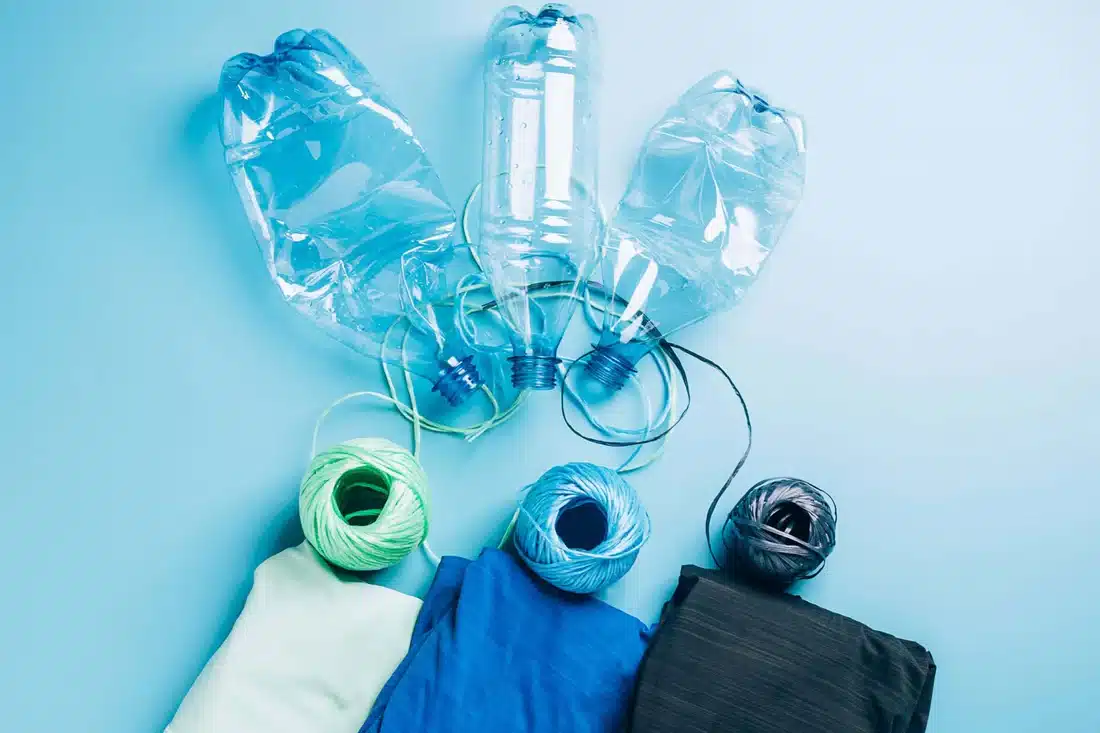
Fleece: Made from Plastic and Recyclable
Fleece is made from synthetic fibers like polyester. Recycling polyester, often from plastic bottles, saves energy. This helps lower greenhouse gas emissions and reduces plastic waste. But fleece has problems too. Washing it releases tiny fibers called microplastics. These can pollute rivers and oceans, harming fish and other animals.
Fleece doesn’t break down naturally and uses non-renewable resources like oil. Recycling fleece helps, but it doesn’t fix all its problems. Scientists are working on better recycling and greener materials. If you pick fleece, use a special washing bag to catch microfibers and cut pollution.
Wool: Natural and Breaks Down Easily
Wool is a natural material that comes from sheep. Sheep grow wool every year, so it’s renewable. Wool breaks down naturally, so it doesn’t harm the planet. It can also be recycled, which helps reduce waste.
Wool is eco-friendly in other ways too. Wool clothes don’t need washing as often as synthetic ones. This saves water and energy over time. Wool also creates fewer greenhouse gases than synthetic fibers, making it a greener choice for outdoor wear.
Best Choice for the Planet
Between fleece and wool, wool is better for the environment. It’s natural, renewable, and breaks down easily. Wool also needs less washing, which lowers its impact on the planet. Fleece, while recyclable, adds to microplastic pollution and uses non-renewable resources.
If you care about the planet, wool is the smarter pick. It’s eco-friendly and supports a healthier Earth. Fleece is still useful for being cheap and drying fast. Just take steps to reduce its environmental harm if you choose it.
Combining Fleece and Wool
For the best of both worlds, many outdoor enthusiasts layer fleece and wool together. For example:
-
Use a merino wool base layer for its moisture-wicking and odor-resistant properties.
-
Add a fleece mid-layer for extra warmth and breathability during high-intensity activities.
Deciding between fleece and wool depends on your outdoor plans. Fleece is light, dries fast, and feels comfy in mild or damp weather. Wool keeps you warmer, handles moisture better, and resists odors, making it great for cold or long trips. Check the table below to see how they compare:
| Feature | Fleece | Wool |
|---|---|---|
| Comfort | Softer and lighter | May itch, but Merino feels soft |
| Warmth | Keeps you warm | Warmer and wicks moisture well |
| Water Handling | Dries fast when wet | Stays warm wet, dries slower |
| Weight | Very light | Heavier than fleece |
| Odor Control | Can hold smells | Resists odors very well |
| Price | Cheaper | Costs more |
Think about your activity, weather, and budget to choose wisely.
FAQ
How are fleece and wool different?
Fleece is man-made, light, and dries fast. Wool is natural, warmer, and soaks up moisture. Fleece is good for mild or damp weather. Wool works best in cold and wet places. Pick based on your activity and weather.
Which is better for layering clothes?
Fleece is great for layering because it’s light and airy. Wool, like Merino, also layers well but gives more warmth. Use fleece for sports and wool for cold weather.
Can you wear fleece or wool in rainy weather?
Fleece dries fast and handles light rain well. Wool absorbs water but keeps you warm when wet. For heavy rain, wear a waterproof jacket over either material.
Which lasts longer, fleece or wool?
Fleece is easy to care for and handles frequent washing. Wool lasts longer but needs gentle care to avoid shrinking. Choose fleece for ease and wool for durability.
Is wool better for the environment than fleece?
Yes, wool is natural, renewable, and breaks down easily. Fleece can be recycled but adds microplastics to water. Wool is the greener choice for the planet.



